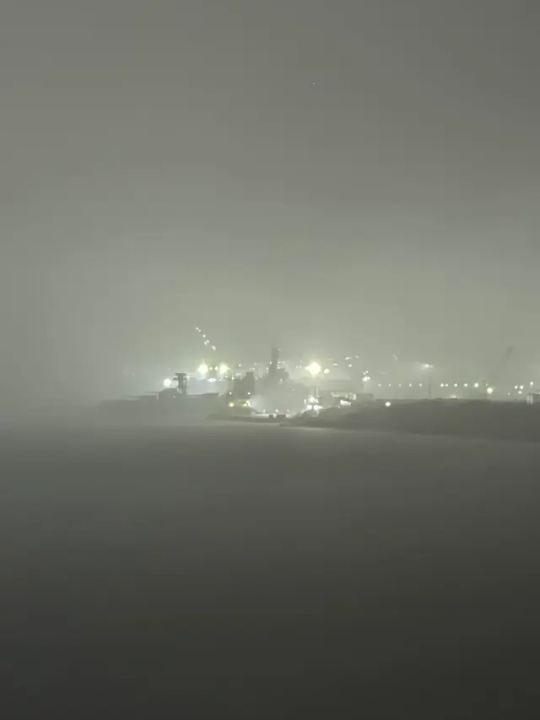#battleship Texas
Explore tagged Tumblr posts
Text



A successful landing of an F.1 Sopwith Camel, piloted by Lieutenant Commander Eddie McDonnell, at a nearby field in Guantanamo Bay, Cuba. He and his aircraft were the first to take off from a battleship, USS TEXAS (BB-35).
Photographed on March 10, 1919.
Posted on the Battleship Texas Overnight Program Facebook page: link
Posted on the Naval History and Heritage Command Facebook page:link
Posted on the National Naval Aviation Museum Facebook page: link
source
#USS TEXAS (BB-35)#USS TEXAS#New York Class#battleship TEXAS#Dreadnought#Battleship#Warship#Ship#United States Navy#U.S. Navy#US Navy#USN#Navy#Sopwith Camel F.1#Sopwith Camel#Observation Plane#Spotter Plane#Aircraft#Airplane#Guantanamo Bay#Cuba#March#1919#Interwar Period#Interwar#my post
81 notes
·
View notes
Text

The Battleship Texas used to be moored in San Jacinto. The last time I visited the ship as a pre-teen, the tour guide said this, “This battleship could shoot a bullet the weight of a VW bug and hit a building with precision using technology from WWII.” That blew my mind. The quote has stuck with me and blows my mind even more today.
17 notes
·
View notes
Text

Battleship TEXAS this morning.
Date: March 17, 2024
Posted by Andres Frawner on the Battleship Texas Foundation Group Facebook page: link
#battleship TEXAS#Battleship Texas Foundation#Update#USS TEXAS (BB-35)#USS TEXAS#New York Class#Dreadnought#Battleship#Warship#Ship#Galveston#Texas#repairs#Gulf Copper#Restoration#March#2024#my post
38 notes
·
View notes
Text

Battleship Texas in drydock
6 notes
·
View notes
Text
youtube
#Battleship TEXAS#Battleship Texas Foundation#Update#USS TEXAS (BB-35)#USS TEXAS#New York Class#Dreadnought#Battleship#Warship#Ship#Museum Ship#Galveston#Texas#Gulf Copper#Restoration#Repairs#June#2024#my post#Youtube
1 note
·
View note
Video
youtube
The Texas is afloat again! She looks pretty good for a 110 year old ship (launched 18 May 1912 and commissioned on 12 March 1914). Those guns if they were operable could sink anything afloat today in a one to one action barring missiles and aircraft.
0 notes
Text

Dreadnought
73 notes
·
View notes
Text


The evolution of USS Texas, from a Standard battleship to a radar-equipped shore bombardment battleship.
130 notes
·
View notes
Text

Theodore Roosevelt reviews USS Texas.
52 notes
·
View notes
Text

My wife <3
2 notes
·
View notes
Text

Crew conducting drills aboard USS TEXAS (BB-35), likely in Firth of Forth, Scotland.
Photographed in early 1918.
source
#USS TEXAS (BB-35)#USS TEXAS#New York Class#battleship TEXAS#Dreadnought#Battleship#Warship#Ship#United States Navy#U.S. Navy#US Navy#USN#Navy#World War I#World War 1#WWII#WW1#WWI History#History#Military History#Firth of Forth#Scotland#undated#1918#February#my post
193 notes
·
View notes
Text

Fleet battleships USS Arizona (BB-39), USS Nevada (BB-36), USS Maryland (BB-46), and the USS Texas depart San Francisco Bay, passing under the incomplete Golden Gate Bridge. The spans of the bridge will meet on November 18, 1936.

USS California enters San Francisco Bay on October 11, 1936.
#US Navy#battleships#Golden Gate Bridge#San Francisco#historical photos#USS Arizona#USS Nevada#USS Maryland#USS Texas#USS California
1 note
·
View note
Text
P.S. The photo was taken at a time when America still had a true understanding of the values of freedom and the need to defend them with real force...

USS Nevada and USS Texas in Belfast Lough, Northern Ireland, United Kingdom, May 14 1944.
161 notes
·
View notes
Photo

U.S. Navy New York-class battleship the USS TEXAS at Gulf Copper Dry Dock & Rig Repair in Galveston. (US Coast Guard)
414 notes
·
View notes
Text
youtube
Installing a High-Rise Air Handling Unit | Crane Lifting Guide
#Battleship TEXAS#Battleship Texas Foundation#Update#USS TEXAS (BB-35)#USS TEXAS#New York Class#Dreadnought#Battleship#Warship#Ship#Museum Ship#Galveston#Texas#Gulf Copper#Restoration#Repairs#June#2024#my post#Youtube
1 note
·
View note
Text

Commissioned in 1914 as the most powerful weapon in the world, the Battleship TEXAS is credited with the introduction and innovation of advances in gunnery, aviation, and radar. She is the last surviving Dreadnought as well as the only battleship in existence today that fought in both World War I and World War II. Photo of the Battleship Texas in drydock in Galveston, Texas.
1K notes
·
View notes